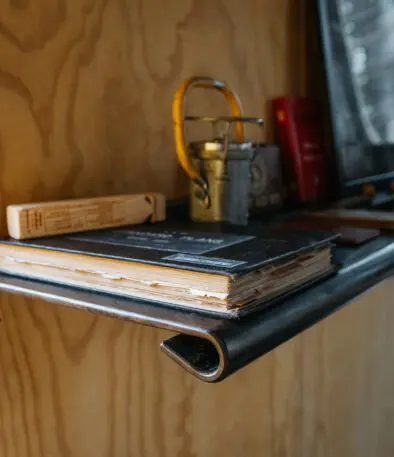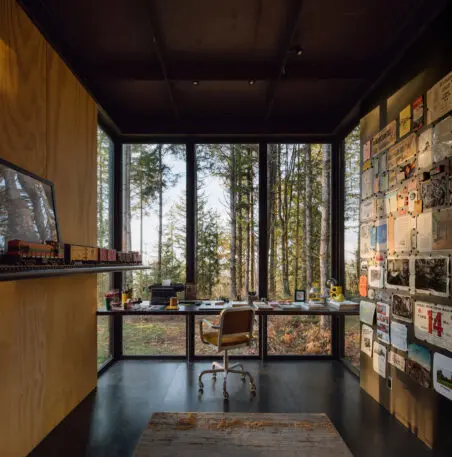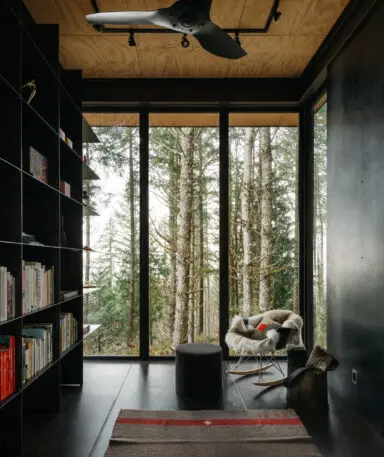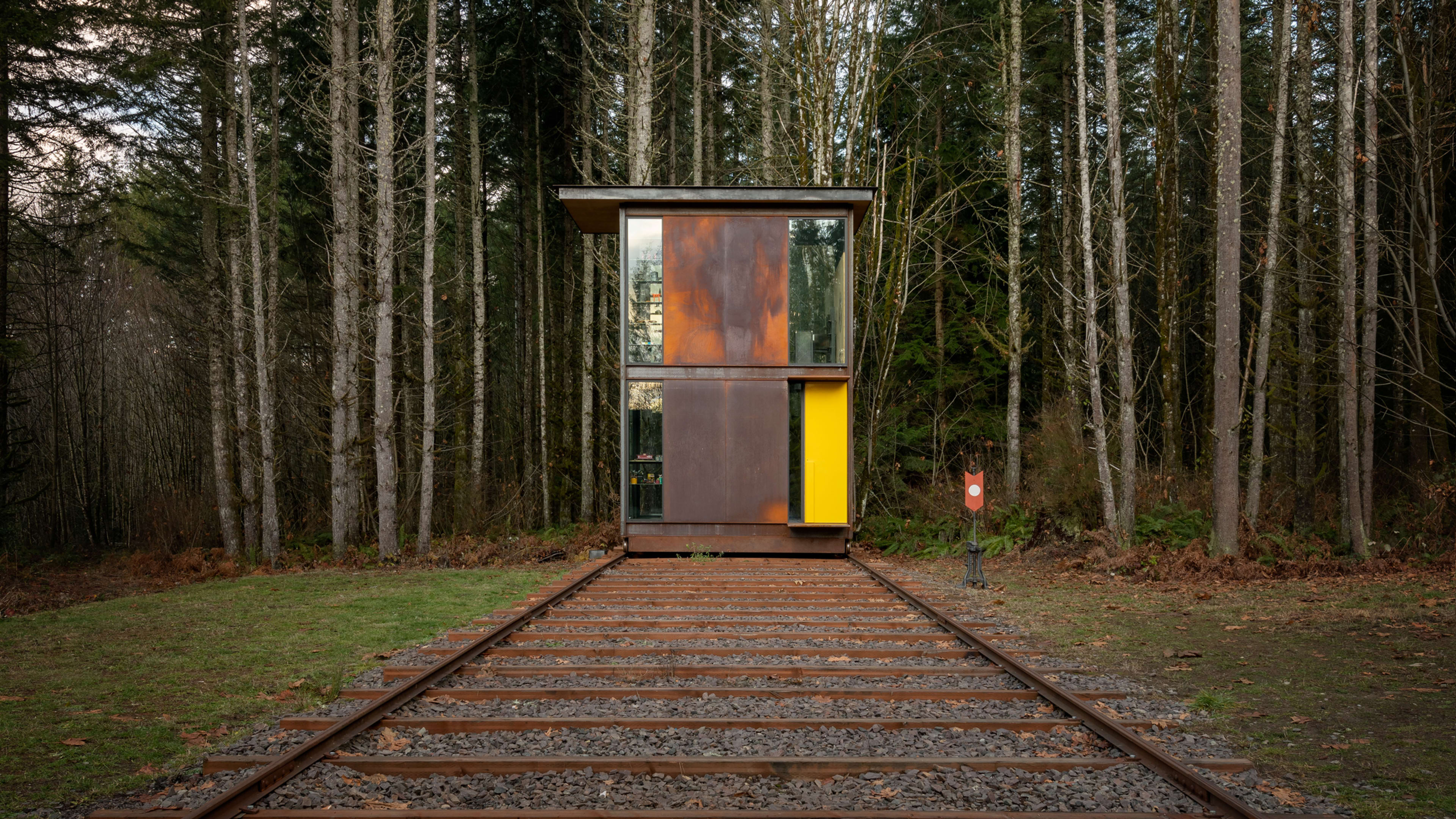As “work from home” has morphed into “work,” most of us have discovered the profound value of getting some distance between our living and office spaces. But who really wants to commute? What if instead, our office could commute for us?
This somewhat outlandish idea—an office shuttling between home and work on tracks—was floated a few years ago by Seattle architects Olson Kundig when they started working with brand entrepreneur Lou Maxon on his family’s house on a heavily forested site in Carnation, Washington, about an hour from Seattle.

Olson Kundig had built moving structures before—glass facades that slide up like a garage doors, pivoting walls and canopies—but nothing close to this. For Maxon, they designed a two-story, 35,000 pound, weathered steel office space sitting on 110-feet of wide gauge tracks that can be detached from an extension of the house and directed toward the edge of the forest. Riding on Timken roller bearings (similar to those used in the Mars rover) and powered by a Nord motor (like those that power several retractable roof stadiums), the studio can get to its destination in less than a minute, or glide slowly if desired.
Maxon, who has worked with scrappy startups and corporate behemoths alike to craft brand campaigns and identities, loved the idea from the start. The hard part, after convincing his wife Kim (“It was an easy sell. She wanted me out of the kitchen,” he jokes) was following through on a concept that was really pretty nuts. “You had to be relentless to build that train,” says Kundig. “To say something or draw something is one thing, but to make this work as well as it does I’m still blown away. It took a relentless investment in time and research.”

Relentless indeed. Maxon started devouring information on train engineering, history, and design. He chatted with people in the railroad community and visited nearby rail yards. And he worked closely with Olson Kundig (particularly their “gizmologist,” Phil Turner, who has built close to 100 kinetic assemblies for the company), and the project’s fabricator, Alpine Construction and Welding, to work out plans. He even started an Instagram page, for which he’s created close to 8,000 posts, showing off components of the train, diving into locomotive lore, and exploring rail wonders and oddities worldwide.

Along the way he discovered a deep history of rail in the region, including steel cables and railroad spikes on his own property, through which logging and dairy railroads had once passed. When work started, the team—all novices, mind you, in building railroads—worked through challenges like pouring 27 dump trucks full of ballast onto the rail path, craning in and welding wide gauge rails, and heating and smoothing out steel sections that originally had nothing to do with each other.

The train’s lower level, which resembles a caboose, is its main working space, with a built-in desk and shelves for storage and display. A steel-clad wall allows Maxon to post inspiring materials. The upper level, accessible via a steel ladder (with a small dumbwaiter to transport heavy items), is as a calmer zone for creative brainstorming and relaxation. It also serves as a moving lookout. It’s almost like a massive film dolly, from where Maxon and visitors can look out at the adjacent forest or across the Tolt River Valley below, the panorama shifting as they progress.

Lou’s fanatical train research shows up in countless details. The bulky control panel, which was formerly installed in a Burlington Northern locomotive, manages acceleration and braking. The yellow door matches the striping on Great Northern trains, and plywood—a common cladding in railcards—lines most interior walls. The timber railroad ties were repurposed from a Great Northern Railroad relay line.

The quirky looking vehicle is a creative Nirvana, according to Maxon. An, ahem, transporting experience that takes him out of his home, and even out of everyday reality. Because, when does reality include a moving office?
“I probably move it three to four times a day,” says Maxon. “Sometimes I’ll be in the house and something hits me and I’ll run out to the train.” He adds: “I think there is a sense of wonder in experiencing a building moving. It’s kind of magic.”
Recognize your brand’s excellence by applying to this year’s Brands That Matter Awards before the early-rate deadline, May 3.
